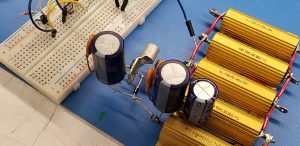As a part of my research, I worked on several new solar cell designs that consist of a-Si/c-Si or CdS/CdSe heterojunctions with p-i-i-n configuration, as well as a cascaded a-Si/c-Si with p-i-n-n-i-p configuration. The following is an excerpt from my doctoral dissertation:
Multigap solar cells such as tandem and cascaded architectures are more efficient energy transducer because their absorption characteristics are better tuned for solar spectrum. Our proposed p-i-i-n structure relies on an advantage of a double intrinsic layer of a solar cell and the simulations show a theoretical efficiency of around 29%. This approach has not been tried before and there is no prior documentation of similar structures. These results are far from the theoretical limit of 44%, however they are based on the structures that use relatively cheap materials with a hope of making it competitive on the market. The three proposed structures were modelled and simulated in SILVACO TCAD software, and the results were presented at the 43rd and 44th Photovoltaics Specialist’s Conference and published in the PVSC Proceedings.
In contrast to other solar cell designs, our structures incorporate a double intrinsic layer with a heterojunction located between the two intrinsic layers. This layout is slightly different from tandem solar cells because those can be considered as monolithically connected independent solar cells (i.e. p-i-n-i-n+, p-i-n-p-i-n compared to the proposed p-i-i-n structures). A cascaded a-Si/c-Si with p-i-n-n-i-p configuration was also designed and published by our group because it required manufacturing steps akin to the ones used for other proposed structures but could produce a relatively higher current density.
Since for an electron-hole pair to be produced, a semiconductor material must be illuminated by a photon with energy equal to or larger than the bandgap, there are certain advantages of having a solar cell made of materials with different bandgaps. The rationale of having a heterostructure double intrinsic layer is to harvest higher-energy photons with a material that has a wider energy gap before those photons would hit a material with smaller band gap and dissipate the excess energy as heat. Heat dissipation is decreased, because on average photons that illuminate the system generate electrons with smaller relaxation energy when excited. If a photon was not energetic enough to be absorbed in the first large bandgap layer, it simply continues to propagate to the next layer and will be absorbed there if it has enough energy.



